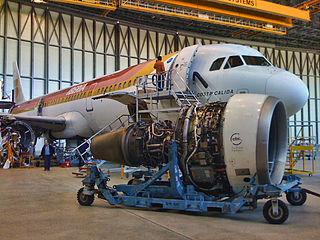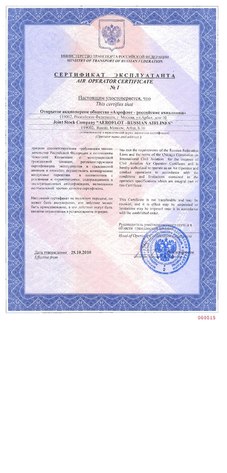
A private pilot licence (PPL) or, in the United States, a private pilot certificate, is a type of pilot licence that allows the holder to act as pilot in command of an aircraft privately. The licence requirements are determined by the International Civil Aviation Organisation (ICAO), but implementation varies widely from country to country. According to the ICAO, it is obtained by successfully completing a course with at least 40 hours of flight time, passing seven written exams, completing a solo cross-country flight, and successfully demonstrating flying skills to an examiner during a flight test. In the United States, pilots can be trained under Part 141 of Title 14 of the Code of Federal Regulations, which allows them to apply for their certificate after as few as 35 hours. However, most pilots require 60–70 hours of flight time to complete their training. The minimum age for a student pilot certificate is 14 for balloons and gliders and 16 for powered flight. The minimum age for a private pilot certificate is 16 for balloons and gliders, and 17 for powered flight. Pilots can begin training at any age and can solo balloons and gliders from age 14 and powered aircraft from age 16.
The airline transport pilot license (ATPL), or in the United States of America, an airline transport pilot (ATP) certificate is the highest level of aircraft pilot certificate. In the United States, those certified as airline transport pilots (unconditional) are authorized to act as pilot in command on scheduled air carriers' aircraft under CFR 14 Part 121. In the UK, pilots must hold an ATPL before they can be pilot in command on an aircraft with 9 or more passenger seats.
A commercial pilot licence (CPL) is a type of pilot licence that permits the holder to act as a pilot of an aircraft and be paid for his/her work.

In the US, an aircraft maintenance technician (AMT) is a tradesperson and also refers to a licensed technical qualification for carrying out aircraft maintenance. AMTs inspect and perform or supervise maintenance, preventive maintenance, repairs and alteration of aircraft and aircraft systems.
Pilot licensing or certification refers to permits for operating aircraft. They are issued by the Civil Aviation Authority (CAA) in each country, establishing that the holder has met a specific set of knowledge and experience requirements. This includes taking a flying test. The certified pilot can then exercise a specific set of privileges in that nation's airspace. Despite attempts to harmonize the requirements between nations, the differences in certification practices and standards from place to place serve to limit full international validity of the national qualifications. In addition, U.S. pilots are certified, not licensed, although the word license is still commonly used informally. Legally, pilot certificates can be revoked by administrative action, whereas licensing requires intervention by the judiciary system.

Pilot certification in the United States is typically required for an individual to act as a pilot-in-command of an aircraft. It is regulated by the Federal Aviation Administration (FAA), a branch of the U.S. Department of Transportation (USDOT). A pilot may be certified under 14 Code of Federal Regulations (CFR) Part 61 or 14 CFR Part 141. Pilots may also be certified under 14 CFR Part 107 for commercial drone operations.

Pilot licensing in Canada is administered by Transport Canada under the Aeronautics Act and the Canadian Aviation Regulations (CARs).
Pilot licensing in the United Kingdom is regulated by the Civil Aviation Authority (CAA).

A type certificate signifies the airworthiness of a particular category of aircraft, according to its manufacturing design. It confirms that the aircraft of a new type intended for serial production, is in compliance with applicable airworthiness requirements established by the national air law.

A flight instructor is a person who teaches others to operate aircraft. Specific privileges granted to holders of a flight instructor qualification vary from country to country, but very generally, a flight instructor serves to enhance or evaluate the knowledge and skill level of an aviator in pursuit of a higher pilot's license, certificate or rating.
A parachute rigger is a person who is trained or licensed to pack, maintain or repair parachutes. A rigger is required to understand fabrics, hardware, webbing, regulations, sewing, packing, and other aspects related to the building, packing, repair, and maintenance of parachutes.

The Canadian Aviation Regulations define two types of ultralight aircraft: basic ultra-light aeroplane (BULA), and advanced ultra-light aeroplane (AULA).
A safety pilot is a rated pilot who helps maintain visual separation from other aircraft, clouds, and terrain while another pilot is wearing view limiting devices for the purposes of simulating instrument conditions.

In aviation, airworthiness is the measure of an aircraft's suitability for safe flight. Initial airworthiness is demonstrated by a certificate of airworthiness issued by the civil aviation authority in the state in which the aircraft is registered, and continuing airworthiness is achieved by performing the required maintenance actions.

A type rating is an authorization entered on or associated with a pilot licence and forming part thereof, stating pilot's privileges or limitations pertaining to certain aircraft type. Such qualification requires additional training beyond the scope of the initial license and aircraft class training.

Aircraft maintenance is the performance of tasks required to ensure the continuing airworthiness of an aircraft or aircraft part, including overhaul, inspection, replacement, defect rectification, and the embodiment of modifications, compliance with airworthiness directives and repair.
An ordinary seaman (OS) is a member of the deck department of a ship. The position is an apprenticeship to become an able seaman, and has been for centuries. In modern times, an OS is required to work on a ship for a specific amount of time, gaining what is referred to as "sea time". For centuries, the term ordinary seaman was used to refer to a seaman with between one and two years' experience at sea, who showed enough seamanship to be so rated by their captain. Historically in some navies and the merchant marine a sailor with less experience was called a landsman.

An air operator's certificate (AOC) is the approval granted by a civil aviation authority (CAA) to an aircraft operator to allow it to use aircraft for commercial purposes. This requires the operator to have personnel, assets, and system in place to ensure the safety of its employees, and the general public. The certificate will list the aircraft types, and registrations to be used, for what purpose and in what area – specific airports or geographic region.
In the United States, there are three classes of medical certifications for pilots; such certificates are required to legally exercise the privileges of a Pilot exercising the privileges of either a Private, Commercial, or Airline Transport Pilot license. Medical Certificates are not needed for Glider, Balloon, Recreational, or Sport Pilot certifications. Each certificate must be issued by a doctor approved by the Federal Aviation Administration to a person of stable physical and mental health.
An Aircraft Maintenance Engineer (AME), also Licensed Aircraft Maintenance Engineer, is a licensed person who carries out and certifies aircraft maintenance. The license is widespread internationally and is recognised by the International Civil Aviation Organization (ICAO). The American FAA recognise the qualification in foreign countries but refers to it as aviation maintenance engineer rather than "Aircraft...". Unlicensed mechanics or tradespersons are sometimes informally referred to as "Unlicensed AMEs"












